248. Kittlitz's Plover Charadrius pecuarius (Geelborsstrandkiewiet)
Order: Charadriiformes. Family: Charadriidae
Description
Size 14-15 cm. In flight, the primary flight feathers are dark with a short white wing bar. There is a dark eye patch at all times. It has rather long legs (toes projecting well beyond tail in flight).
In breeding plumage it has a grey-brown back, crown, and wings, an orange breast shading to white on the lower belly. The breast is variably creamy buff to chestnut, and there is a dark shoulder patch. It has long dark grey legs. The forehead and throat are white, with black lores and a black frontal bar, the latter extending as a stripe down the sides of the neck and around the hind neck.
Non-breeding adults lose the distinctive face pattern. The head is less well marked in non-breeding plumage, with the pale buffy ring around the crown extending to the nape.
The juvenile lacks the black mask and forecrown and the yellow breast; it may be distinguished from juvenile White-fronted Plover by the broad, buffy eye-brow stripe extending onto the buffy (not white) nape.
Distribution
Occurs in Madagascar and sub-Saharan Africa, from Senegal to Ethiopia south to southern Africa. Within southern Africa it is locally common across much of the region, largely excluding south-central Botswana and the outer areas of Namibia. Common in Namibia in Etosha National Park, Swakopmund and Walvis Bay, central Namibia.
Habitat: Found throughout in dried muddy or short grassy areas near water, also on mudflats in estuaries and coastal lagoons.
Movements and migrations
It can be sedentary, nomadic or migratory depending on environmental conditions, as for example in particularly dry years it often moves from arid regions to areas with more rainfall, vice versa in high rainfall years. It is mainly sedentary when breeding, while it is often nomadic in the non-breeding season. Coastal populations appear to be fairly sedentary.
Diet
It mainly eats small invertebrates, especially beetles, foraging by day and night using the typical run-stop-search technique of plover. While foraging it is aggressive towards other Kittlitz's plovers as well as other species with a similar diet, such as Common ringed plover and Curlew sandpiper.
Breeding: Monogamous, territorial and usually a solitary nester, occasionally breeding in loose groups. The nest is a simple scrape in bare ground, either bare or lined with pebbles, fragments of vegetation, mud, grass, shell pieces and animal dung. It is typically placed in coarse sand or dry mud, sometimes raised on a mound. Egg-laying season is year-round, peaking from October-January in the Western Cape, June-November elsewhere in South Africa and from July-October in Botswana and Zimbabwe. It lays 1-3 eggs, which are incubated by both sexes for about 22-28 days, with the female taking the day shift while the male incubates at night. The chicks leave the nest within 24 hours of hatching, and are brooded for about a third of daytime, a practice which ceases once after about six weeks, although they fledge at about 25-32 days old.
Call
A short, clipped trill kittip.
Status
Common resident and local nomad.
Africa Wild Bird Book
- nan
- Posts: 26317
- Joined: Thu May 31, 2012 9:41 pm
- Country: Switzerland
- Location: Central Europe
- Contact:
Kittlitz's Plover Photos
248. Kittlitz's Plover Charadrius pecuarius
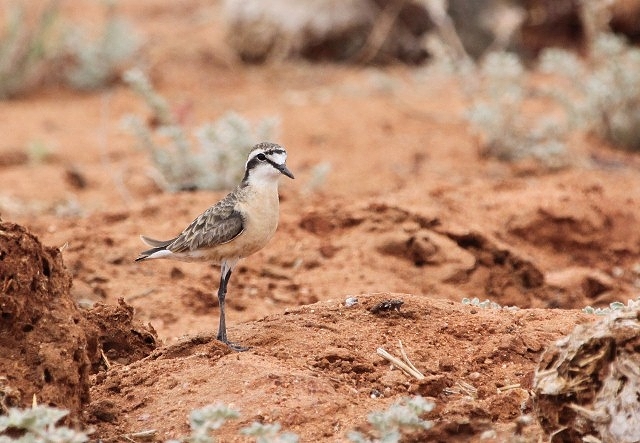
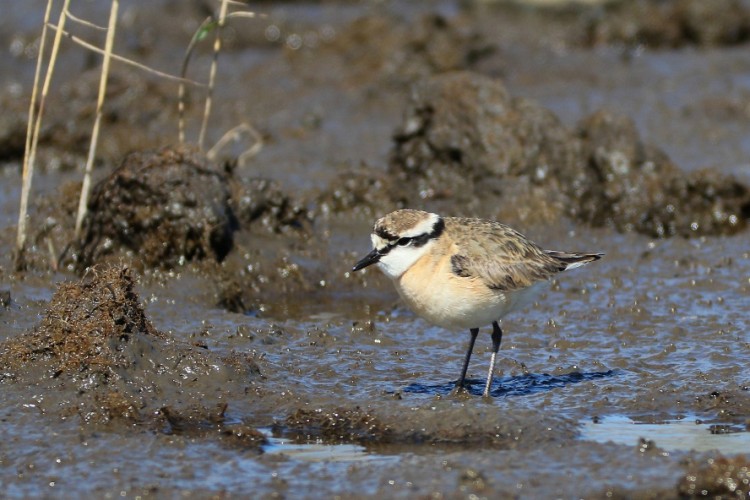 © Dindingwe
© Dindingwe
Macaneta Wetlands, about 30 kms north of Maputo
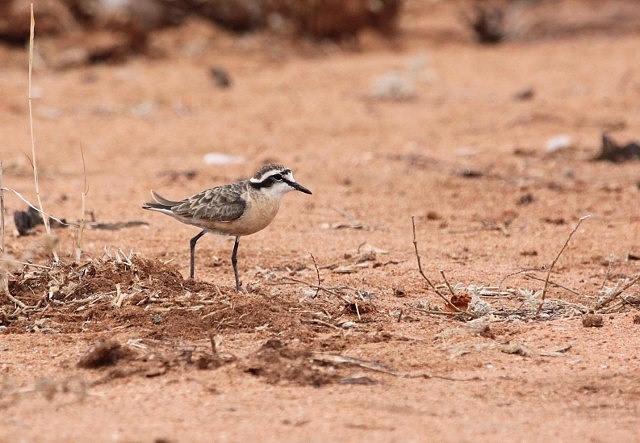 © nan
© nan
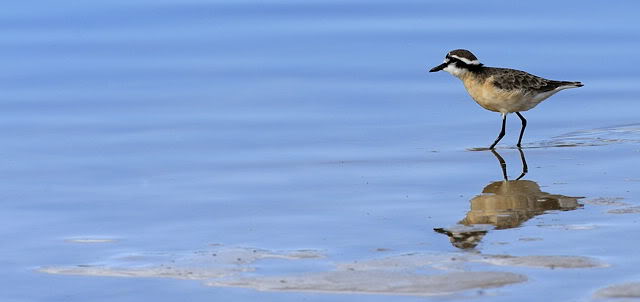 © Dewi
© Dewi
Adult breeding
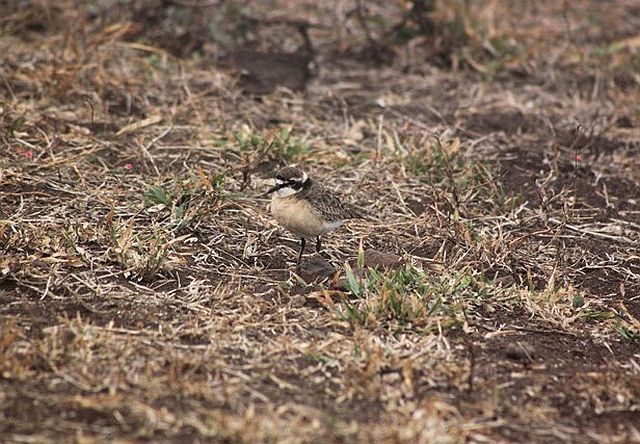 © Heksie
© Heksie
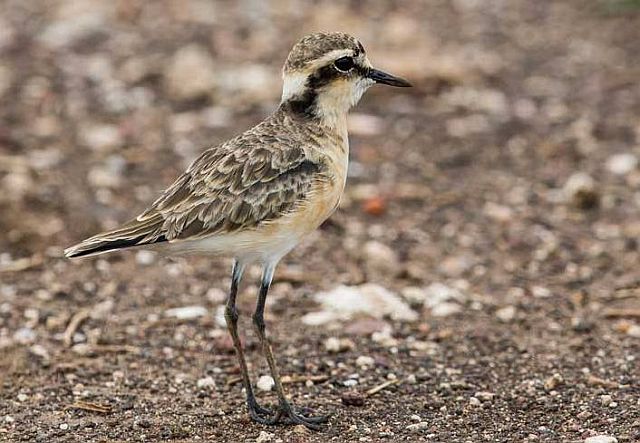 © Pumbaa
© Pumbaa
Juvenile
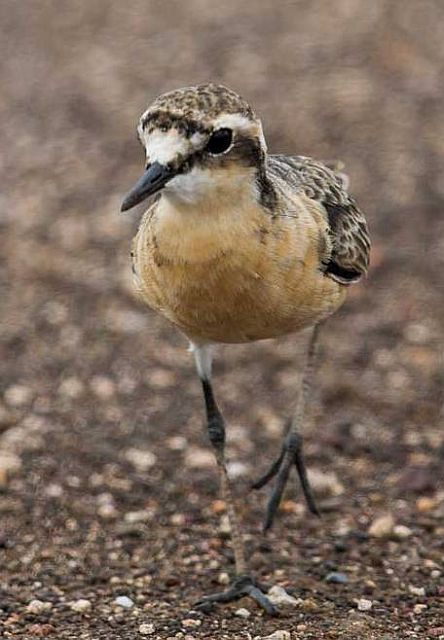 © Pumbaa
© Pumbaa
Kruger National Park
Links:
http://sabap2.adu.org.za/v1/docs/sabap1/248.pdf
http://sabap2.adu.org.za/spp_summary.ph ... §ion=3
http://animaldiversity.ummz.umich.edu/a ... pecuarius/

Macaneta Wetlands, about 30 kms north of Maputo
 © nan
© nan © Dewi
© DewiAdult breeding
 © Heksie
© Heksie © Pumbaa
© PumbaaJuvenile
 © Pumbaa
© PumbaaKruger National Park
Links:
http://sabap2.adu.org.za/v1/docs/sabap1/248.pdf
http://sabap2.adu.org.za/spp_summary.ph ... §ion=3
http://animaldiversity.ummz.umich.edu/a ... pecuarius/
Kgalagadi lover… for ever
https://safrounet.piwigo.com/
https://safrounet.piwigo.com/
- Sprocky
- Posts: 7121
- Joined: Sat May 19, 2012 12:29 pm
- Country: South Africa
- Location: Grietjie Private Reserve
- Contact:
Three-banded Plover
249. Three-banded Plover Charadrius tricollaris
Order: Charadriiformes. Family: Charadriidae
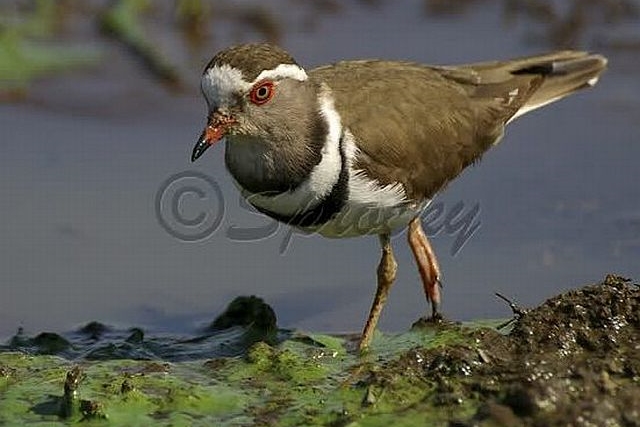
Description
18 cm. Only plover with double black breast band.
The adult Three-banded Plover is 18 cm in length. It has long wings and a long tail. It has medium brown upperparts, and the underparts are white except for the two black breast bands, separated by a white band. The head is strikingly patterned, with a black crown, white supercilia extending from the white forehead to meet on the back of the neck, and a grey face becoming brown on the neck. The eye ring and the base of the otherwise black bill are red. Sexes alike.
The juvenile is duller and has the upper band brown, the lower band flecked white, the head overall brown. It lacks red eye-ring.
Distribution
It is found in Madagascar and sub-Saharan Africa, in Nigeria as well as in the area from Ethiopia south through Uganda, Tanzania, southern DRC, Zambia and Angola to southern Africa. Within southern Africa it is common across much of the region, largely excluding arid south-central Botswana.
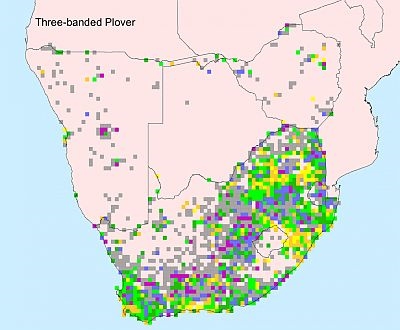
Habitat
It prefers open shores of any freshwater habitat, such as pools, streams, seeps, farm dams and sewage works.
Diet
It mainly eats invertebrates (both terrestrial and aquatic), doing most of its foraging on open shores using the typical plover technique, running, stopping and searching for prey then repeating the process.
Breeding
Monogamous, territorial solitary nester, defending its territory by running or flying at intruders, which can be another Three-banded plover or a different species. The nest is a simple scrape in sand, shingle or dry mud, often lined with dried bits of material, dried mud or pebbles and typically placed close to the water. Egg-laying season is almost year-round, often peaking from July-December. It lays 1-2 eggs, which are incubated by both sexes for about 26-28 days, as the male defends the territory by day while the female incubates, then switching places at night so that the female can feed. The chicks are brooded frequently at first, taking their first flight at about 21-22 days old and can fly strongly 9-10 days later. They may remain with their parents up to about 40-42 days old.
Call
Plaintive wik, wik; flight call a shrill weee-weet. Listen to Bird Call.
Status
Common resident, mostly sedentary but undergoes large-scale movements in response to water levels.
Order: Charadriiformes. Family: Charadriidae

Description
18 cm. Only plover with double black breast band.
The adult Three-banded Plover is 18 cm in length. It has long wings and a long tail. It has medium brown upperparts, and the underparts are white except for the two black breast bands, separated by a white band. The head is strikingly patterned, with a black crown, white supercilia extending from the white forehead to meet on the back of the neck, and a grey face becoming brown on the neck. The eye ring and the base of the otherwise black bill are red. Sexes alike.
The juvenile is duller and has the upper band brown, the lower band flecked white, the head overall brown. It lacks red eye-ring.
Distribution
It is found in Madagascar and sub-Saharan Africa, in Nigeria as well as in the area from Ethiopia south through Uganda, Tanzania, southern DRC, Zambia and Angola to southern Africa. Within southern Africa it is common across much of the region, largely excluding arid south-central Botswana.

Habitat
It prefers open shores of any freshwater habitat, such as pools, streams, seeps, farm dams and sewage works.
Diet
It mainly eats invertebrates (both terrestrial and aquatic), doing most of its foraging on open shores using the typical plover technique, running, stopping and searching for prey then repeating the process.
Breeding
Monogamous, territorial solitary nester, defending its territory by running or flying at intruders, which can be another Three-banded plover or a different species. The nest is a simple scrape in sand, shingle or dry mud, often lined with dried bits of material, dried mud or pebbles and typically placed close to the water. Egg-laying season is almost year-round, often peaking from July-December. It lays 1-2 eggs, which are incubated by both sexes for about 26-28 days, as the male defends the territory by day while the female incubates, then switching places at night so that the female can feed. The chicks are brooded frequently at first, taking their first flight at about 21-22 days old and can fly strongly 9-10 days later. They may remain with their parents up to about 40-42 days old.
Call
Plaintive wik, wik; flight call a shrill weee-weet. Listen to Bird Call.
Status
Common resident, mostly sedentary but undergoes large-scale movements in response to water levels.
Sometimes it’s not until you don’t see what you want to see, that you truly open your eyes.
- Sprocky
- Posts: 7121
- Joined: Sat May 19, 2012 12:29 pm
- Country: South Africa
- Location: Grietjie Private Reserve
- Contact:
Three-banded Plover Photos
249. Three-banded Plover Charadrius tricollaris
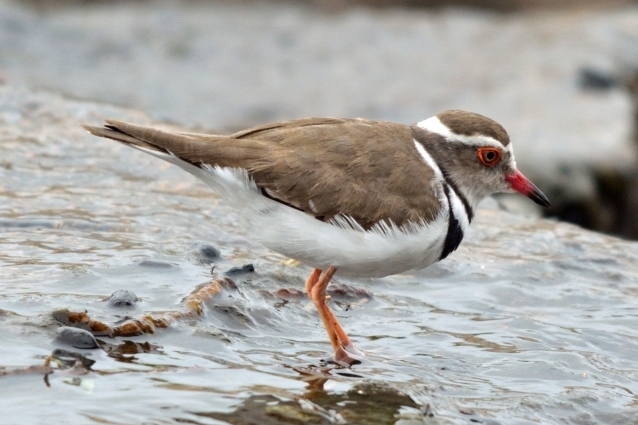 © BluTuna
© BluTuna
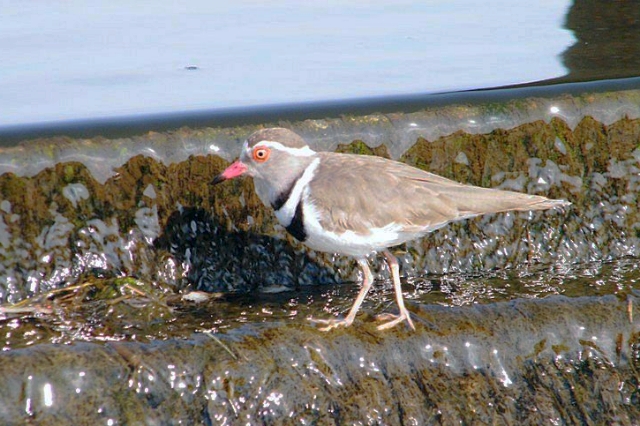 © Richprins
© Richprins
Kruger National Park, Biyamiti Loop
 © Pumbaa
© Pumbaa
Juvenile, Kruger National Park
 © steamtrainfan
© steamtrainfan
Chick
Links:
Species Text Sabap1
Sabap2
Newman's Birds of Southern Africa
 © BluTuna
© BluTuna © Richprins
© RichprinsKruger National Park, Biyamiti Loop
 © Pumbaa
© Pumbaa Juvenile, Kruger National Park
 © steamtrainfan
© steamtrainfanChick
Links:
Species Text Sabap1
Sabap2
Newman's Birds of Southern Africa
Sometimes it’s not until you don’t see what you want to see, that you truly open your eyes.
- nan
- Posts: 26317
- Joined: Thu May 31, 2012 9:41 pm
- Country: Switzerland
- Location: Central Europe
- Contact:
White-fronted Plover
246. White-fronted Plover Charadrius marginatus (Vaalstrandkiewiet)
Order: Charadriiformes. Family: Charadriidae
Description
Size 16 cm. A pale plover, neck very short, giving the bird a chubby appearance. Bill very short.
Adult male: Frons, forecrown and supercilium white, mid-crown crossed by blackish band; remainder of crown sandy grey, feathers fringed pale brown to off-white. Lores blackish brown, colour extending in narrow stripe behind eye to ear coverts. Remainder of face and nuchal collar white. Mantle, back and rump greyish to sandy grey, feathers fringed pale brown to off-white. Upper tail coverts and tail centrally blackish, laterally white. Primaries and secondaries dark brown, with bases, inner webs and shafts white. Coverts brownish grey, edged sandy brown; greater coverts tipped white. Pale dusky-brown lateral patch on upper breast. Lower breast and upper belly sometimes washed salmon or chestnut; remainder of underparts white. Bill black. Eyes brown. Legs and feet pale grey to green-grey or pale green.
Adult female: As ad male, but black band on crown narrower and less well defined.The frontal bar may be absent in some females.
Non-breeding adults are greyer than the breeding birds, and the black head marking are replaced by brown.
The juvenile White-fronted Plover resembles the non-breeding adult, but the breast is usually white with small, dusky, lateral patches. has white underparts and no black on the head.
Similar species: It resembles Chestnut-banded Plover but is slightly larger, with collar and lacking a complete breast band. Paler than Kittlitz's Plover, its also lacks the dark head markings, but may have a thin, black line through the eye and across the forehead. It is also lighter coloured and smaller than Lesser Sand Plover. Underpart colour varies regionally from white to a rich salmon.
Distribution
Endemic to sub-Saharan Africa; in southern Africa it is one of the most common birds along the coastline, also occupying Zimbabwe, north-eastern South Africa, patches of Mozambique, northern Botswana and Namibia (including the Caprivi Strip).
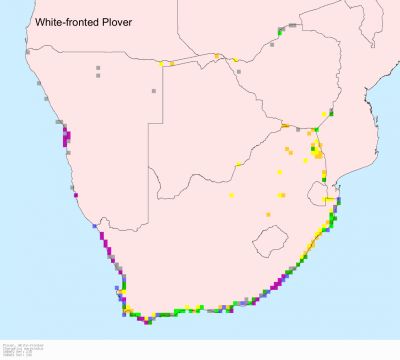
Habitat
Sandy and rocky shores, muddy coastal areas and larger inland rivers and pans.
Movements and migrations
Largely sedentary along the coast, occasionally moving from exposed to sheltered shores in winter. However inland it is migratory, leaving the northern and north-western region of southern Africa in December because of floods, heading to the south-eastern coast, where it stays until May.
Diet
It mainly eats insects and aquatic invertebrates, foraging by day and night using the typical technique of plovers, running, stopping then searching for prey to pluck from the ground, then repeating the process. It also stands while trembling its feet in the substratum, which disturbs invertebrates for it to catch.
Breeding
Monogamous, territorial solitary nester, defending its territory against neighbouring birds by attacking aerially or by running at the intruder with its head held low. The nest is a simple scrape in sand, gravel or shingle, usually unlined but occasionally lined with with pebbles, shell fragments, seaweed or twigs. It is typically placed on the beach just above the high water mark, or alternatively on a dune, riverine sandbank or in a quarry. Egg-laying season is year-round, peaking from September-November in the Western Cape, December-January in Namibia, July-August in KwaZulu-Natal and from July-October inland. The female lays 1-3 eggs, which are incubated by both sexes for about 27-33 days; if an intruder approaches the nest the incubating bird often partially or completely covers the eggs with sand. The young chicks fledge at about 35-38 days old, protected selflessly by their parents, who often feign injury in an attempt to distract a nearby predator.
Call
A clear wiiit; also a tukut alarm call. Listen to Bird Call.
Status
Common resident.
Order: Charadriiformes. Family: Charadriidae
Description
Size 16 cm. A pale plover, neck very short, giving the bird a chubby appearance. Bill very short.
Adult male: Frons, forecrown and supercilium white, mid-crown crossed by blackish band; remainder of crown sandy grey, feathers fringed pale brown to off-white. Lores blackish brown, colour extending in narrow stripe behind eye to ear coverts. Remainder of face and nuchal collar white. Mantle, back and rump greyish to sandy grey, feathers fringed pale brown to off-white. Upper tail coverts and tail centrally blackish, laterally white. Primaries and secondaries dark brown, with bases, inner webs and shafts white. Coverts brownish grey, edged sandy brown; greater coverts tipped white. Pale dusky-brown lateral patch on upper breast. Lower breast and upper belly sometimes washed salmon or chestnut; remainder of underparts white. Bill black. Eyes brown. Legs and feet pale grey to green-grey or pale green.
Adult female: As ad male, but black band on crown narrower and less well defined.The frontal bar may be absent in some females.
Non-breeding adults are greyer than the breeding birds, and the black head marking are replaced by brown.
The juvenile White-fronted Plover resembles the non-breeding adult, but the breast is usually white with small, dusky, lateral patches. has white underparts and no black on the head.
Similar species: It resembles Chestnut-banded Plover but is slightly larger, with collar and lacking a complete breast band. Paler than Kittlitz's Plover, its also lacks the dark head markings, but may have a thin, black line through the eye and across the forehead. It is also lighter coloured and smaller than Lesser Sand Plover. Underpart colour varies regionally from white to a rich salmon.
Distribution
Endemic to sub-Saharan Africa; in southern Africa it is one of the most common birds along the coastline, also occupying Zimbabwe, north-eastern South Africa, patches of Mozambique, northern Botswana and Namibia (including the Caprivi Strip).

Habitat
Sandy and rocky shores, muddy coastal areas and larger inland rivers and pans.
Movements and migrations
Largely sedentary along the coast, occasionally moving from exposed to sheltered shores in winter. However inland it is migratory, leaving the northern and north-western region of southern Africa in December because of floods, heading to the south-eastern coast, where it stays until May.
Diet
It mainly eats insects and aquatic invertebrates, foraging by day and night using the typical technique of plovers, running, stopping then searching for prey to pluck from the ground, then repeating the process. It also stands while trembling its feet in the substratum, which disturbs invertebrates for it to catch.
Breeding
Monogamous, territorial solitary nester, defending its territory against neighbouring birds by attacking aerially or by running at the intruder with its head held low. The nest is a simple scrape in sand, gravel or shingle, usually unlined but occasionally lined with with pebbles, shell fragments, seaweed or twigs. It is typically placed on the beach just above the high water mark, or alternatively on a dune, riverine sandbank or in a quarry. Egg-laying season is year-round, peaking from September-November in the Western Cape, December-January in Namibia, July-August in KwaZulu-Natal and from July-October inland. The female lays 1-3 eggs, which are incubated by both sexes for about 27-33 days; if an intruder approaches the nest the incubating bird often partially or completely covers the eggs with sand. The young chicks fledge at about 35-38 days old, protected selflessly by their parents, who often feign injury in an attempt to distract a nearby predator.
Call
A clear wiiit; also a tukut alarm call. Listen to Bird Call.
Status
Common resident.
Kgalagadi lover… for ever
https://safrounet.piwigo.com/
https://safrounet.piwigo.com/
- nan
- Posts: 26317
- Joined: Thu May 31, 2012 9:41 pm
- Country: Switzerland
- Location: Central Europe
- Contact:
White-fronted Plover Photos
246. White-fronted Plover Charadrius marginatus

De Mond Nature Reserve © graham
 © Tina
© Tina
West Coast National Park, Seeberg Bird Hide
 © Amoli
© Amoli
Kruger National Park, Sunset dam
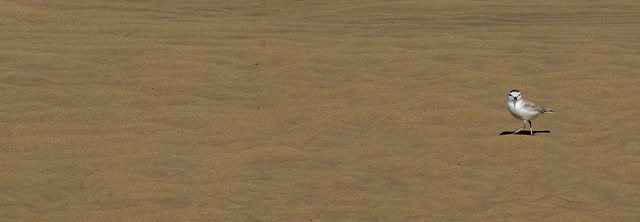 © Dewi
© Dewi
KwaZulu-Natal
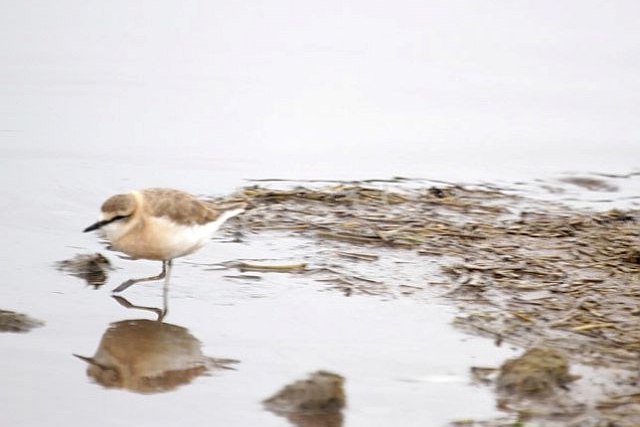 © leachy
© leachy
Kruger National Park
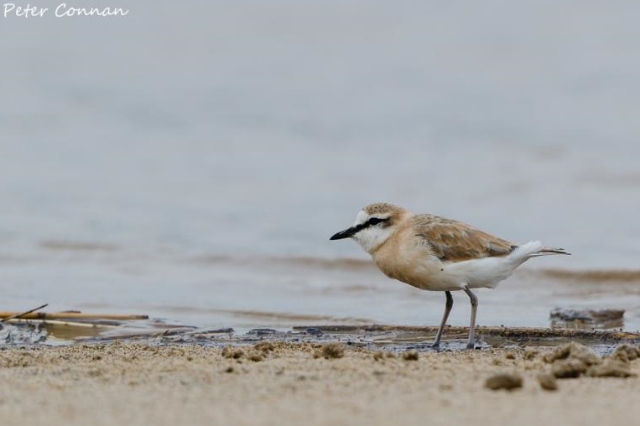 © Peter Connan
© Peter Connan
Maphelane, iSimangaliso Wetland Park, KwaZulu-Natal
Links:
Sabap2
Ian Sinclair. SASOL VOELS VAN SUIDER AFRICA (3de UIT)
Newman's Birds of Southern Africa

De Mond Nature Reserve © graham
 © Tina
© TinaWest Coast National Park, Seeberg Bird Hide
 © Amoli
© AmoliKruger National Park, Sunset dam
 © Dewi
© DewiKwaZulu-Natal
 © leachy
© leachyKruger National Park
 © Peter Connan
© Peter ConnanMaphelane, iSimangaliso Wetland Park, KwaZulu-Natal
Links:
Sabap2
Ian Sinclair. SASOL VOELS VAN SUIDER AFRICA (3de UIT)
Newman's Birds of Southern Africa
Kgalagadi lover… for ever
https://safrounet.piwigo.com/
https://safrounet.piwigo.com/
Chestnut-banded Plover
247. Chestnut-banded Plover Charadrius pallidus (Rooibandstrandkiewiet)
Order: Charadriiformes. Family: Charadriidae
Description
Length 15 cm, weight 28-39 g. The smallest Charadrius species. Upperparts are very pale grey (C. p. pallidus), and underparts are white with a narrow chestnut breast band.
Male has black markings on the forehead and lores.
The female lacks the black forecrown and lores. Female has grey in place of the neat markings on the forehead and lores and has a paler breast band.
Juvenile has a broken or complete narrow grey breast band and lacks all black and chestnut.
Distribution
Charadrius pallidus has a disjunct distribution with two separate populations. The nominate subspecies occurs across southern Africa in Angola, Botswana, Mozambique, Namibia, South Africa and Zimbabwe, while subspecies venustus is restricted to the Rift Valley of East Africa in Kenya and Tanzania. Three sites - Walvis Bay and Sandwich Harbour in Namibia, and Lake Natron in Tanzania - hold 87% of the world population during non-breeding periods. Within southern Africa it is locally common along the west coast of the region, as well as in patches of northern Namibia and eastern Botswana, while more scarce in Zimbabwe, coastal Mozambique and inland South Africa.
Habitat
It is found primarily at saltpans, occasionally moving to coastal saline lagoons, pans, shallow bays and estuaries. In Namibia, when inland habitats dry up, it moves to coastal habitats such as Walvis Bay Lagoon and Sandwich Harbour, and the saltworks near Swakopmund and Cape Cross.
Diet
It mainly eats insects and small crustaceans.
Breeding
Monogamous, territorial solitary nester, defending a territory of 20-100 m of pan shoreline against other breeding pairs and waterbird species. The nest is a scrape in the ground lined with quartz chips, clay shards, grass, fish bones and small gastropods shells. Egg-laying season in the Western Cape from September-February, peaking from November-December, while elsewhere in southern Africa egg-laying season is from March-October. It usually lays two eggs, which are mainly incubated by the female during the day and by the male in the evenings. The chick are often held under the wings of their parents, eventually fledging at about 28-33 days old.
Call
A single prrt or tooit. Listen to Bird Call.
Status
Uncommon localised resident or partial migrant. Classified as Near Threatened (NT) on the IUCN Red List.
Order: Charadriiformes. Family: Charadriidae
Description
Length 15 cm, weight 28-39 g. The smallest Charadrius species. Upperparts are very pale grey (C. p. pallidus), and underparts are white with a narrow chestnut breast band.
Male has black markings on the forehead and lores.
The female lacks the black forecrown and lores. Female has grey in place of the neat markings on the forehead and lores and has a paler breast band.
Juvenile has a broken or complete narrow grey breast band and lacks all black and chestnut.
Distribution
Charadrius pallidus has a disjunct distribution with two separate populations. The nominate subspecies occurs across southern Africa in Angola, Botswana, Mozambique, Namibia, South Africa and Zimbabwe, while subspecies venustus is restricted to the Rift Valley of East Africa in Kenya and Tanzania. Three sites - Walvis Bay and Sandwich Harbour in Namibia, and Lake Natron in Tanzania - hold 87% of the world population during non-breeding periods. Within southern Africa it is locally common along the west coast of the region, as well as in patches of northern Namibia and eastern Botswana, while more scarce in Zimbabwe, coastal Mozambique and inland South Africa.
Habitat
It is found primarily at saltpans, occasionally moving to coastal saline lagoons, pans, shallow bays and estuaries. In Namibia, when inland habitats dry up, it moves to coastal habitats such as Walvis Bay Lagoon and Sandwich Harbour, and the saltworks near Swakopmund and Cape Cross.
Diet
It mainly eats insects and small crustaceans.
Breeding
Monogamous, territorial solitary nester, defending a territory of 20-100 m of pan shoreline against other breeding pairs and waterbird species. The nest is a scrape in the ground lined with quartz chips, clay shards, grass, fish bones and small gastropods shells. Egg-laying season in the Western Cape from September-February, peaking from November-December, while elsewhere in southern Africa egg-laying season is from March-October. It usually lays two eggs, which are mainly incubated by the female during the day and by the male in the evenings. The chick are often held under the wings of their parents, eventually fledging at about 28-33 days old.
Call
A single prrt or tooit. Listen to Bird Call.
Status
Uncommon localised resident or partial migrant. Classified as Near Threatened (NT) on the IUCN Red List.
Chestnut-banded Plover Photos
247. Chestnut-banded Plover Charadrius pallidus
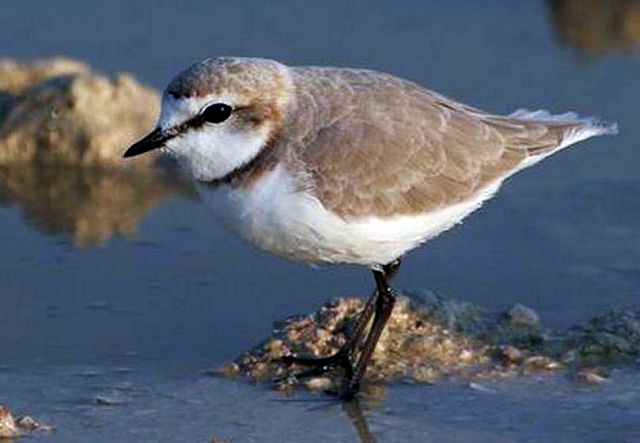
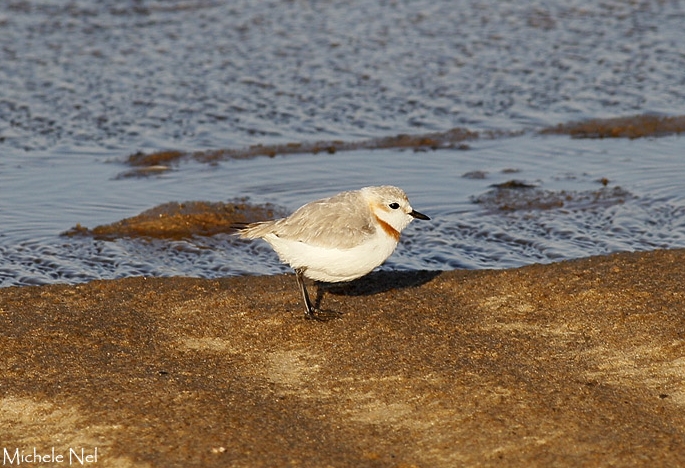 © Michele Nel
© Michele Nel
Female, Walvis Bay, Namibia
Links:
Sabap2
Ian Sinclair. SASOL VOELS VAN SUIDER AFRICA (3de UIT)
Newman's Birds of Southern Africa

 © Michele Nel
© Michele NelFemale, Walvis Bay, Namibia
Links:
Sabap2
Ian Sinclair. SASOL VOELS VAN SUIDER AFRICA (3de UIT)
Newman's Birds of Southern Africa
Family Rostratulidae (Painted Snipe)
The Rostratulidae (commonly known as Painted-snipes), form a taxonomic family of wader species, composed of two genera: Rostratula and Nycticryphes, the family encompasses only three living species.
he painted-snipes are short-legged, long-billed birds similar in shape to the true snipes, but their plumage is much more striking. There is sexual dimorphism in both size and plumage, with the males being duller overall and smaller. All three species have large forward pointing eyes. They generally inhabit reedy swamps and marshes, usually in lowlands. Outside of the breeding season painted-snipes are generally solitary in habits. Painted snipes are crepuscular or even slightly nocturnal in their habits. Painted-snipes are omnivorous, feeding on invertebrates and seeds. Animal prey taken includes annelid worms, snails, aquatic and marsh insects, and crustaceans. The seeds of grasses such as millet and rice are also consumed, and may form a major part of the diet of some populations.
The breeding biology of the painted snipes varies according to genus; the Rostratula painted snipes are generally polyandrous whereas the Lesser Painted Snipe is monogamous. The females of the genus Rostratula will bond with several males during a breeding season, but once the eggs are laid the males provide all the incubation and parental care. The nest is a shallow cup, often built on a platform of vegetation. Clutch sizes range from 2-4 eggs, which are incubated for 15-21 days.
he painted-snipes are short-legged, long-billed birds similar in shape to the true snipes, but their plumage is much more striking. There is sexual dimorphism in both size and plumage, with the males being duller overall and smaller. All three species have large forward pointing eyes. They generally inhabit reedy swamps and marshes, usually in lowlands. Outside of the breeding season painted-snipes are generally solitary in habits. Painted snipes are crepuscular or even slightly nocturnal in their habits. Painted-snipes are omnivorous, feeding on invertebrates and seeds. Animal prey taken includes annelid worms, snails, aquatic and marsh insects, and crustaceans. The seeds of grasses such as millet and rice are also consumed, and may form a major part of the diet of some populations.
The breeding biology of the painted snipes varies according to genus; the Rostratula painted snipes are generally polyandrous whereas the Lesser Painted Snipe is monogamous. The females of the genus Rostratula will bond with several males during a breeding season, but once the eggs are laid the males provide all the incubation and parental care. The nest is a shallow cup, often built on a platform of vegetation. Clutch sizes range from 2-4 eggs, which are incubated for 15-21 days.
Family Rostratulidae (Painted Snipe) Index
The family Rostratulidae (Painted Snipe) is represented in Southern Africa with one species only:
Rostratula benghalensis Greater Painted-snipe 242
Rostratula benghalensis Greater Painted-snipe 242


